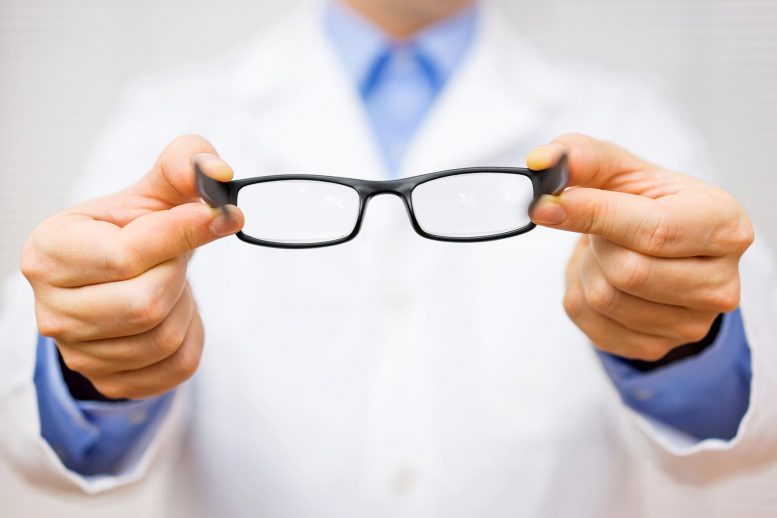[ad_1]

An increase in circumstances of short-sightedness (myopia) amongst youngsters in Hong Kong could also be linked to a major lower in the time they’ve been ready to spend open air and a pointy rise in display time throughout the coronavirus pandemic, suggests analysis revealed on-line in the British Journal of Ophthalmology.
By September 2020, greater than 180 international locations had closed faculties and faculties, affecting one billion learners, or 80% of the world’s college students, in a bid to management the march of coronavirus, say the researchers.
Children have been significantly badly affected, with out of doors actions restricted or banned and socializing severely restricted. Hong Kong can be one of many world’s most densely populated cities, with most residents residing in high-rises and small flats with little out of doors area.
An enhance in shut working and display time and a lower in time spent open air have been implicated in short-sightedness, a situation in which the form of the attention adjustments, inflicting mild rays to bend (refract) incorrectly, focusing pictures in entrance of, as an alternative of on the floor of, the retina.
Short-sightedness in youngsters issues as a result of it places them liable to growing problems that enhance the danger of irreversible impaired eyesight/blindness later in life, say the researchers.
To discover out if enforced behavioral and life-style adjustments throughout the pandemic may need affected youngsters’s imaginative and prescient, the researchers studied the eyes of 1793 youngsters, all of whom had been a part of the Hong Kong Children Eye Study (HKCES). This is an ongoing population-based examine of eye circumstances amongst 6-8-year-olds.
Some 709 of the youngsters had been recruited to the examine on the start of the pandemic (December 2019 to January 2020) and had been monitored for round 8 months; 1084 youngsters had entered the examine earlier than the start of the pandemic and had been monitored for round 3 years.
The youngsters’s visible acuity — the flexibility to see clearly — was measured they usually crammed in questionnaires on their life-style, together with how a lot time they spent open air and on shut work, at examine entry, and through subsequent clinic visits.
Around 1 in 5 (19.5%) of the youngsters in the COVID-19 group developed short-sightedness between January and August 2020, in contrast with round 1 in 3 (37%) of these in the pre-COVID-19 group over a interval of three years.
And after factoring in age, gender, size of monitoring interval, parental short-sightedness, and the way a lot time was spent open air and on shut work, the numbers of recent circumstances of short-sightedness had been increased amongst youngsters in the COVID-19 group.
The estimated 1-year incidence of short-sightedness was 28%, 27%, and 26%, respectively, for 6, 7, and 8-year-olds in the COVID-19 group, in contrast with 17%, 16%, and 15%, respectively, for 6, 7, and 8-year-olds in the pre-COVID-19 group.
These adjustments coincided with a discount in the time the youngsters spent open air, from round an hour and 15 minutes to round 24 minutes/day and a rise in display time from round 2.5 hours/day to round 7 hours/day.
The researchers additionally in contrast the present COVID-19 group with the findings of their earlier examine, which seemed on the growth of short-sightedness in youngsters of the identical ages in Hong Kong.
In the earlier examine, 13% of the youngsters developed the situation over a interval of 1 yr. This compares with 19.5% of the COVID-19 group in the present examine over a shorter interval of 8 months, lending additional weight to a link between the pandemic and a heightened threat of short-sightedness, counsel the researchers.
This is an observational examine, and as such, can’t set up trigger, added to which the analysis included questionnaire information, which depend on recall.
And the findings may not mirror the impression of COVID-19 in different components of the world, the place social distancing, quarantine, and faculty closure insurance policies could also be totally different, warning the researchers.
Nevertheless, they write: “Despite all these insurmountable study limitations, our initial results still show an alarming myopia progression that warrants appropriate remedial action.”
And they conclude: “[They] serve to warn eye care professionals, and also policy makers, educators and parents, that collective efforts are needed to prevent childhood myopia, a potential public health crisis as a result of COVID-19.”
Reference: 2 August 2021, British Journal of Ophthalmology.
DOI: 10.1136/bjophthalmol-2021-319307
[ad_2]